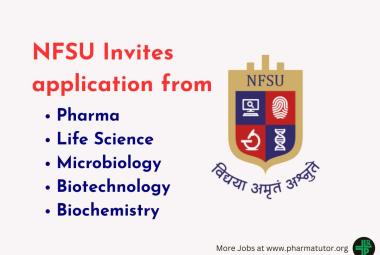 About Authors: Debojyoti Adak
About Authors: Debojyoti Adak
M.Pharm in Pharmaceutical Chemistry
Seemanta Institute of Pharmaceutical Science, Jharpokharia
Mayurbhanj,
Orissa-757086
Reference ID: PHARMATUTOR-ART-1080
ABSTRACT
Cancer is the leading cause of death worldwide. Chemotherapy is not much safer medication for cancer therapy. Now a day a new technology is developing regarding medication that is nanotechnology. As medication it is well known as nanomedication. It is based on the particle size between 1 nanometer and 100 nanometers. Nanomedicine application areas include drug delivery, therapy, diagonistic, imaging and antimicrobial techniques.This article aims at giving an overview of the present status of nanotechnology in cancer therapy.
[adsense:336x280:8701650588]
INTRODUCTION
The word "Nano" is derived from the greek word ν?νος(nanos) for dwarf. A nanometer is a billionth of a meter, that is, about 1/80,000 of the diameter of a human hair, or 10 times the diameter of a hydrogen atom. When this nanotechnology is introduced in medication, it is knowned as nanomedication. Due to its specificity, safety, non toxic nature this nanomedication is now going to be the main weapon for the doctor in the war against cancer.
What is nanotechnology?
Nanotechnology is the engineering of functional systems at the molecular scale. This covers both current work and concepts that are more advanced. In its original sense, nanotechnology refers to the projected ability to construct items from the bottom up, using techniques and tools being developed today to make complete, high performance products. Nanotechnology refers to the interactions of cellular and molecular components and engineered materials-typically clusters of atoms, molecules, and molecular fragments-at the most elemental level of biology.
Cancer
Cancer is a complex disease. The death rate from cancer has increased dramatically over the past several decades. It can be argued that, non-traditional, paradigm shifting ideas and approaches are needed in order to improve this unfortunate trend. In recent years, nanotechnology has emerged as a disruptive technology with a potential to generate new diagnostic and therapeutic products and as a result improve cancer outcomes. Novel and multi-functional nanodevices could be capable of detecting cancer at its earliest stages, delivering anticancer drugs specifically to malignant cells, and determining if these drugs are effective. Functionalized nanoparticles could deliver multiple therapeutic agents to tumor sites in order to simultaneously attack multiple points in the pathways involved in cancer.
Why nanotacchnology?
• Ineffectiveness of many Cancer treatments
• Numerous side effects
• Difficulties in early Cancer detection
• No immunization
• 99% of chemotherapy drugs do not reach the cancer cells
• Nanotubes, nanorods, dendrimers, nanospheres, nanoantennas, … using carbon, iron, gadolinium, gold, silicon, etc.
• Antigen binding peptide ligands are attached to the nanostructures
• Folic acid baiting
• Passive targeting - Leaky blood vessels near tumors cause the nanoparticles to cluster around the tumors
Current Limitations -
• Cancer targeting is highly dependent on surface chemistry. Not just any nanoparticle will work.
• The need for biocompatible and stable nanoparticles
• Side-effects and toxicity
• Environmental impact
• Uncharted territory
NOW YOU CAN ALSO PUBLISH YOUR ARTICLE ONLINE.
SUBMIT YOUR ARTICLE/PROJECT AT articles@pharmatutor.org
Subscribe to Pharmatutor Job Alerts by Email
Nanotechnology in Cancer Treatment
The use of nanotechnology in cancer treatment offers some exciting possibilities, including the possibility of destroying cancer tumors with minimal damage to healthy tissue and organs, as well as the detection and elimination of cancer cells before they form tumors.
Because of their small size, nanoscale devices can readily interact with biomolecules on both the surface of cells and inside of cells. Since biological processes, including events that lead to cancer, occur inside cells, nanotechnology offers a wealth of tools to cancer researchers with and innovative ways to diagnose and treat cancer. Development and application of nano-scaled products for cancer treatment show promise of increased efficiency with reduced or maybe even eliminated side-effects. Many nano-scale devices are developed to aid in cancer detection and elimination. These are as followes-
Nanowires- One-dimentional wires measured in nanometers; that is their diameter is not more than just a few 0.000000001 meters. By nature they have incredible properties of selectivity and specificity. Nanowires can be engineered to sense and pick up molecular markers of cancer cells. This technology can help pinpoint the changes in the genetics of cancer.
Quantum Dots- It is a useful tool for diagnosing and combating cancer. It is also known as nanocrystals. Quantum dots are made of tiny bits of metal, one thousand times smaller than the width of human hair. They can be molded into different shapes and coated with a variety of cancer detecting materials. Their coating a peptide material, allows them to hone in on tumors. Similar peptide coating can also be used to track proteins inside cancer cells. But since quantum dots are made of poisonous materials like cadmium, they must be coated before they can be used in living systems.
Nanoscale Cantilevers- It is a part of larger diagnostic device, can provide rapid and sensitive detection of cancer-related molecules. The cantilevers possess conductive properties and are coated with specific antibodies responsive to cancer proteins. This is much more effective technique than traditional detection methods because it allows doctors to detect cancer before tumor formation, and could in fact allow for the prevention of tumors if the disease is treated appropriately.
Dendrimers- It is a special type of nanoparticles that resemble a sphere with tree like branches. The tip of each branch carries a different molecule that serves a different function. Denrimers will be able to recognize and diagnose cancer cells, deliver appropriate treatment, visually identification of the cells’ location, and indicate the elimination of the mutated cells. Use of dendrimers potentially means a onetime visit for cancer patients.
Gold-Coated Nanoshells- One of the biggest advancements in notechnology comes in the form of gold. A nanoshell, is developed of 100 nm diameter sphere, consists of silica core and old surface coating. On top of the gold coating, the nanoshells are also coated with antibodies that recognize the Epidermal Growth Factor Receptor (EGFR) protein on the surface of cancer cells (GA Tech). Gold-coated nanoshells eliminate tumors through heat rather than chemicals.This technology will increase the selectivity of drugs towards cancer cells and will reduce the toxicity to normal tissue. Surface modification of nanoparticles can also enhance the permeability of drugs to create high-permeability nanoparticles-based cancer therapeutics. With improved cell permeability, nanoparticles can become more therapeutically effective drug transport vehicles.
Cancer Treatments using Nanotechnology: Company Directory
|
Company |
Product |
|
CytImmune |
Gold nanoparticles for targeted delivery of drugs to tumors |
|
NanoBioMagnetics |
Magnetically responsive nanoparticles for targeted drug delivery and other applications |
|
Abraxis BioScience |
Nanoparticles composed of a protein called albumin for targeted delivery of drugs to tumors |
|
Epeius Biotechnologies |
Nanoparticles for targeted delivery of drugs to tumors |
|
Calando Pharmaceuticals |
Nanoparticles for the targeted delivery of siRNA to cancer tumors |
|
Nanobiotix |
Nanoparticles that target tumor cells, when irradiated by xrays the nanoparticles generate electrons which cause localized destruction of the tumor cells. |
|
Nanospectra |
AuroShell particles (nanoshells) for thermal destruction of cancer tissue |
|
Nanosphere |
Diagnostic testing using gold nanoparticles to detect low levels of proteins indicating particular diseases |
|
Oxonica |
Diagnostic testing using gold nanoparticles (biomarkers) |
|
T2 Biosystems |
Diagnostic testing using magnetic nanoparticles |
|
MagArray |
Diagnostic testing using magnetic nanoparticles |
|
MagForce |
Iron oxide nanoparticles used in heat treatment of solid tumors |
Advantages of nanomedication
• Increased bioavailability
• Dose proportionality
• Decreased toxicity
• Smaller dosage form (i.e., smaller tablet)
• Stable dosage forms of drugs which are either unstable or have unacceptably low bioavailability in non-nanoparticulate dosage forms.
• Increased active agent surface area results in a faster dissolution of the active agent in an aqueous environment, such as the human body. Faster dissolution generally equates with greater bioavailability, smaller drug doses, less toxicity.
• Reduction in fed/fasted variability
Scope in future
• Human clinical trials within the next 2-3 years
• Highly specific team of communicating multifunctional nanoparticles used in the discovery, treatment, and prevention of Cancer growth
• Safer, more consistent, and highly specific nanoparticle production
• Turning Cancer into a chronic, but manageable disease within the next 15-20 years
Conclusion
Nanotechnology may open a new door on the treatment of cancer. Nanomedication improves cancer treatment in terms of efficiency and quality. It will sure change the way of diagnose, treat and prevent cancer to help meet the goal of eliminating suffering and death from cancer. With nanomedication it should be possible to stop cancer even before it develops. Nanomedication has the potential to increase the life span of human beings.
NOW YOU CAN ALSO PUBLISH YOUR ARTICLE ONLINE.
SUBMIT YOUR ARTICLE/PROJECT AT articles@pharmatutor.org









